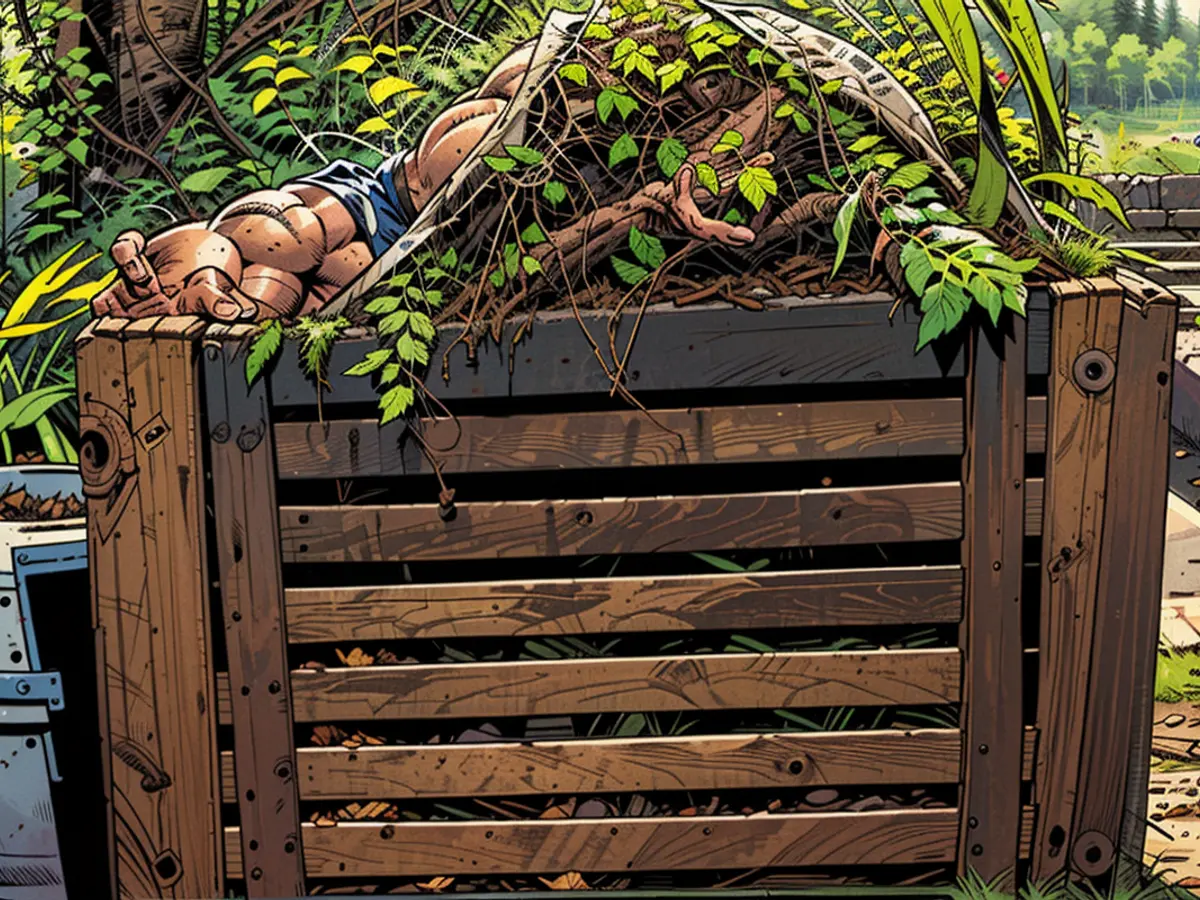Creating compost from your garden's gold
In one place - not quite that straightforward. But, a large portion of what falls in the garden and around the house can be composted. For example, as fertilizer. The fundamentals.
From flowers, fallen leaves, trimmings from hedges and borders - these things regularly drop in every garden. What to do with them? A viable option is a biotone, but those who want to garden sustainably convert this waste into humus.
Humus is a mighty asset: it not only nourishes the plants in the garden, but also greatly enhances the soil's structure. Hence, it's called the garden's gold when it comes to composting.
Where to place your garden compost
A general location should be determined: not too close to the house or the neighbor's property, but not too far from the cultivated areas. The NABU (Nature Conservation Association Germany) suggests placing the "rent" - which refers to the heap of healthy garden and kitchen waste - in an open space so that beneficial organisms from the soil can migrate in.
To deter mice, the ground is covered with a coarse mesh. A lightly shaded spot is ideal because the material stays a bit moist and benefits from natural rain. If a container is preferred, keep in mind that the compost shouldn't be surrounded by closed walls, as the microorganisms need air. So, scatter holes and ventilation slits evenly over the container's walls.
What goes on top, what should be avoided?
A compost is constructed in layers. The seasons take care of the arrangement, with modifications occurring every few months. In spring, cuttings from dry perennials, grass clippings, and kitchen waste are added to the heap. In summer, floral trimmings, dry leaves from spring flowers, and grass go on top. In autumn, the dried leaves of deciduous trees are placed there.
The lawn? It can go on top, but make sure it's not excessively wet, as the fine material sticks together and prevents proper air circulation.
While vegetables and fruit scraps, eggshells, leaves, and old soil from pots can be thrown directly onto the compost, the NABU advises using hay, feathers, wild plants, ash, and citrus fruits with restraint.
Be warned: Coated paper, food leftovers, bread, diseased plant parts, ash, cat litter, and mineral waste do not belong on the compost pile.
Warm pile or cold method
Piling up the materials then stacking them all together usually creates a high temperature (up to 70 degrees Celsius) in the pile. Later, the temperature drops, and small organisms, like worms, produce humus. You can choose between a warm compost pile, which heats up quickly and decomposes materials faster, and a cold pile, which takes longer to break down the materials but still creates humus over time.
It takes around a year for a compost to be fully processed. The NABU recommends turning the compost once or twice during this time - not in terms of relocation, but lifting the lower layer to the top and the top layer to the bottom. While doing so, screen everything through a compost sieve. Large components that haven't decomposed can be set aside for the next compost layer.
The finely ground humus obtained in this manner can then be utilized as fertilizer in flower beds and pots. It nourishes plants with necessary nutrients for growth and flower and fruit development. Simultaneously, the soil organisms are fed, which improve the soil's structure by enhancing aeration and warming.
Lastly, composting not only improves the soil's fertility but also contributes to closing natural nutrient cycles and biological waste, according to the Bavarian State Environment Agency. By using it as fertilizer, you can prevent the need for peat, reducing both peat use and overall emissions.
Read also:
- For those interested in nature conservation, the NABU (Nature Conservation Association Germany) advises using compost made from garden and kitchen waste in their gardening practices, as it helps in closing natural nutrient cycles and reducing the need for peat, thereby reducing overall emissions.
- As a real estate advisor, recommending organic gardening techniques, such as composting, to clients can be a great way to attract consumers who are environmentally conscious and interested in nature conservation.
- To promote animal welfare and nature conservation, some farmers have started using composted waste from their farms as a natural alternative to synthetic fertilizers, thereby reducing the impact of agricultural practices on animal habitats and the environment.







